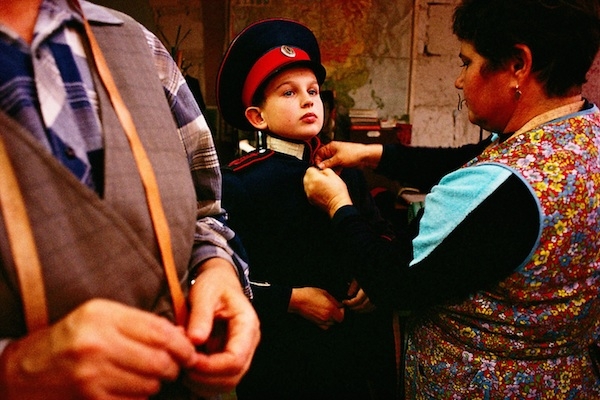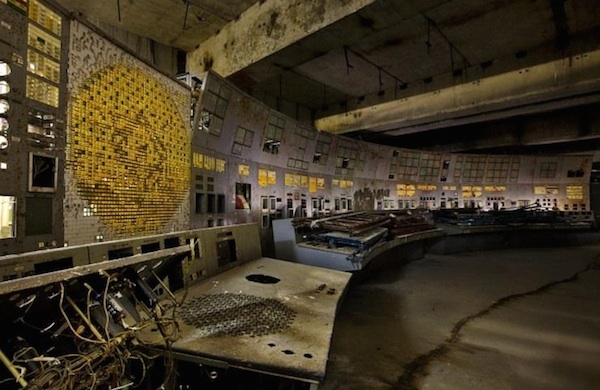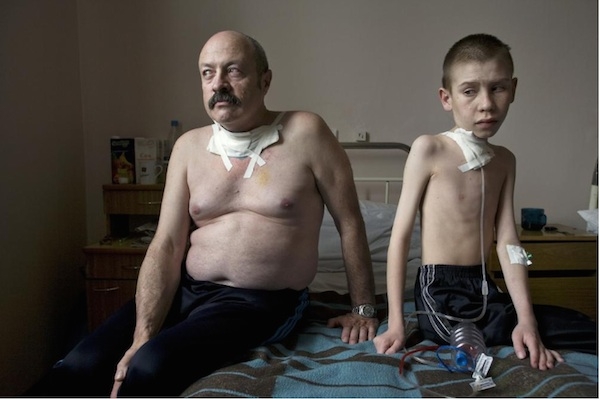Photographer Profile - Gerd Ludwig: "If you carelessly photograph someone in distress, you increase their pain"

|
|
|
It might also have included the word persistent, along with innovative. For the kind of stories Ludwig tells, one is not much good without the other.
A longtime contributor to National Geographic, Ludwig has also shot stories for Geo, Stern, Der Spiegel, Time and other magazines. But he is best known for two extended and related projects: His decade-long coverage of the social and economic changes that followed the collapse of the Soviet Union in the 1990s resulted in the 2001 book Broken Empire: After the Fall of the USSR. And in 2014 he published The Long Shadow of Chernobyl, which received the Best Photography Book Award in this year’s Pictures of the Year International competition.
Based on 20 years of work at the site of the world’s worst nuclear disaster, the book is a serious and shocking consideration of what blind faith in technology can lead to. Ludwig's work, noted Alexander Strecker at the LensCulture blog, shows that the effects of a nuclear disaster cannot be understood on a human scale. "In the words of noted scientist Alexei Okeanov, the ramifications of Chernobyl are like 'a fire that can't be put out in our lifetimes,'" Strecker wrote.

The Chernobyl work was financed in part through a Kickstarter campaign that Ludwig launched in 2011— one of the first times crowdfunding was used to bring off a major photo project. (He launched another successful campaign in 2014 to publish his book.) In that respect, it was an innovative use of photojournalism. Nonetheless, the project’s lasting importance comes from aspects of Ludwig’s work that are not new at all — courage, in the form of a deep commitment to tell a meaningful story.
“I approached it as a responsibility to show the truth about something — that’s the life of a documentary photographer,” Ludwig said in a recent interview.
But, as Ludwig has pointed out, the work at Chernobyl and in the Soviet Union reflect not just a sense of professionalism, but an identity rooted in his past.
Asking Questions
Ludwig was born in 1947, in Alsfeld, Germany. "For generations both of my parents’ families, ethnic Germans, had lived in a part of Bohemia known as the Sudetenland, where nationalities could change overnight as borders were arbitrarily redrawn by shifting powers," he wrote in the introduction to Broken Empire. "Born a citizen of Austria-Hungary, my father was designated a Czechoslovakian citizen after World War I and later drafted into the Czech Army. When Europe’s leaders conceded to Hitler’s demands to annex Czechoslovakia in 1939, my father went from being a Czech soldier one day to a German soldier the next."
He was among the millions troops who invaded the Soviet Union, and was one of the few who survived the battle of Stalingrad. Later he would describe his experiences to his son.
“His war stories became my bedtime stories,” Ludwig says.Ludwig was part of a generation of Germans who inherited a legacy of shame. “As I grew older, I began to ask questions. [My father’s] explanations weren’t really enough,” he said in one interview. After studying German literature, political science, and physical education at the University of Marburg, Ludwig thought about becoming a teacher, but instead he began to travel while working as a bricklayer, a dishwasher and a merchant sailor.

Along the way he picked up a camera and found a new direction for his life. He studied photography for five years with German photographer and teacher Otto Steinert at the Folkwangschule (now Folkwang University of the Arts) in Essen. Following that, he co-founded VISUM, a successful cooperative photo agency, and began freelancing for magazines.
In 1984, after working on A Day In the Life of Australia, the first installment in the landmark book series created by Rick Smolan and David Elliot Cohen, Ludwig relocated to the US. By the early 1990s he was a contract photographer for National Geographic, working on stories for the magazine about the changes taking place in the former Soviet Union.
The work represented a emotional balm and challenge for Ludwig. “I had grown up with a strong feeling of guilt about what Germans had done in Russia, so I wanted to go there, but early on I wouldn’t allow myself to shoot any images that were critical in nature or even address politics,” he says. Ultimately, as Russia shed its Soviet past and came to terms with its own history, Ludwig was able to create a careful, compassionate, and honest portrait of the vast country.
“Gradually, I discovered that though Soviet rulers had professed concerns for workers and respect for nature, they destroyed both,” he would write later.
Innocent Victims
As Ludwig put it in the introduction of Broken Empire, “The bald children of Chernobyl and the limbless children of Moscow were part of a deeply disturbing truth: Birth defects and infant death…strike the peoples of this land at twice the rate found in industrial nations of the west.”
It was in 1993, for a National Geographic story about pollution in post-Soviet republics, that Ludwig began to take a deep interest in the Chernobyl site. He returned in 2005, 2011 and 2013 for an extended period of time, photographing the victims of the 1986 disaster, the nearby ghost town of Pripyat, the areas affected by radioactive fallout in both Belarus and Ukraine and the nuclear reactor itself.
On his first trip there, he came loaded with protective gear but was asked by officials not to wear it so as not to scare people at the site who didn’t have any. He complied. “As a photographer, you walk a fine line, and you need people's cooperation to get the job done. In Chernobyl, I ate eggs, fish, and potatoes that were all produced in the contaminated zone,” he told Vice

“I was concerned, but I wasn't really scared,” he said. “As journalists, we often put ourselves into risky environments. But we do this on behalf of the innocent victims—to get their story, which otherwise wouldn't be heard. “To be with these people, to eat and drink with them, is to hear their pain and to see their soul.”
Throughout his career, Ludwig has taught at workshops, including his own Art of Storytelling workshop, which takes place at his home in Los Angeles and on location in Southern California’s Salton Sea. He talks about the importance of research prior to going out to take pictures. But his approach to documentary photography, learned over many years of photographing people in distress, is also founded on an instinct that is fundamentally human in nature.
His work, he said recently, is not only about taking pictures but also sharing himself — listening to the stories of the people he’s photographing and telling them about his own. “You have to remember that if you carelessly photograph someone who is in a difficult situation, you increase their pain,” he said.


